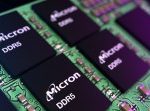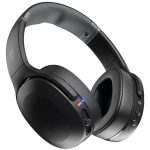
Space Exploration Technologies Corp.’s (SpaceX) satellite-based internet connectivity service Starlink is at the center of a highly-anticipated study submitted by Michael Dell-backed RS Access LLC to the Federal Communications Commission. After having won the FCC’s approval for a crucial Starlink modification last month, Starlink is now one of several non-geostationary fixed-satellite service (NGSO FSS) internet providers that are part of an FCC proceeding set to determine whether new spectrum sharing rules for the 12GHz spectrum are needed.
The Commission opened the floor for comments in January and closed it on Friday last week, despite Starlink and other satellite providers asking for another extension. This extension was denied despite the companies arguing that RS Access had not submitted a crucial study demonstrating how NGSO FSS and multi-video data distribution service (MVDDS) providers could share the 12GHz spectrum.
True to form, RS submitted the study yesterday along with an economic analysis indicating the benefits of allocating the band to 5G 12GHz use. This study uses simulations to demonstrate that even if terrestrial MVDDS 5G and NGSO FSS services share the spectrum, Starlink will face minimum interference. To prove this, it uses technological advancements in both 5G and satellite internet services that reduce the chance of either mistakenly intercepting each other’s signals.

RS Access Study Argues That Even With 2.5 Million Starlink Terminals Across The U.S, Chances Of Interference With Terrestrial 5G Are Minimal
For the study, RS Access commissioned engineering consulting firm RKF Engineering Solutions to simulate the effects of 5G terrestrial 12GHz use on satellite internet services. The study by the engineering firm exclusively focused on Starlink user terminals since they are the only NGSO FSS service terminals currently active in the U.S.
It assumed that 2.5 million user terminals are active across continental America and share the 12GHz band with roughly 50,000 terrestrial base stations, two million mobile devices, 90,000 small cell base stations and 7,000 point-to-point backhaul links. SpaceX is currently authorized to operate one million user terminals in the U.S., and its application to operate up to five million terminals is currently being evaluated by the FCC.
RKF then deploys the terminals according to its belief that the bulk of Starlink terminals will serve areas under the Commission’s Rural Digital Opportunity Fund (RDOF). This fund aims to bring broadband internet access to underserved areas, and SpaceX’s participation has come under fire from opponents such as DISH Corporation and others who argue that the company’s Starlink system does not have the capacity to meet the RDOF needs.

RKF states that the highest probability of interference with Starlink terminals will be for the 50,000 macro-cell base stations by modeling the distribution of the terrestrial base stations, user devices, and backhaul equipment. This probability stands at 0.88% of the 2.5 million user dishes receiving interference above the International Telecommunications Union (ITU) levels.
The firm notes that while the base stations will be the biggest source of interference, this can be “easily” addressed.
Specifically, according to RKF:
The simulation results indicate that the 12 GHz base stations (versus the UEs and point-to-point links) are the dominant sources of interference. This is expected since the base stations are higher up from the ground – by at least 18.5 meters (=20-1.5) for the macro-cell and by 4.5 meters for the small-cell base stations – than the outdoor user equipment and hence can have line-of-sight to the Starlink terminals more often than a UE device would. The transmissions from the indoor user equipment at higher floors go through additional attenuation from the building resulting in lower I/N levels. In addition, the high I/N levels are caused by base stations that are very close to the Starlink terminal and/or when the Starlink terminal is within the base station’s main beam, which can be easily addressed through coordination with little negative effect on either the 12 GHz terrestrial network or the NGSO operator.

RS Access Lists Down Rationale For Spectrum Sharing With Starlink – Highlights $1 Trillion In Benefits
The current debate about new rules for the 12GHz band started with a petition by DISH in 2016, which argued that satellite service provides should be stripped of their access to the band. This, argued DISH and the MVDDS providers, was because spectrum sharing between MVDDS and NGSO FSS was incompatible, but the argument took a new turn recently when the MVDDS camp changed its position to now state that sharing is possible.
While SpaceX’s head of spectrum policy, Mr. David Goldman, decried this shift in stance, RS Access provides several reasons through RKF highlighting what has changed. The company believes that changes in parameters such as ground station election angles, phased array antennas, beamforming and beam steering, among others.

RS Access has removed a crucial barrier that had prevented the rulemaing proceeding from moving forward by submitting the study. As the month progresses, Starlink and other satellite providers will submit their replies to the Commission after evaluating the technical and economic studies.
In its comments as part of the submission, RS also argued that:
The feasibility of these business models, currently in beta and pre-commercial stages, to deliver robust service and attract significant subscriber scale remains highly uncertain.
As it continues to aggressively build out the Starlink constellation, SpaceX is likely to take stock of this statement, as more than half a million users have signed up for the satellite internet service so far.

The complementary economic analysis conducted by the Brattle Group argues that if all parties coexist in the spectrum, then the total economic value generated can reach as high as $54 billion. While an impressive figure, this pales compared to Brattle’s belief that total societal benefits can stand over $1 trillion, as they range between $270 billion and $1,082 trillion if the societal value is assumed as being 20 times the value of spectrum.
This analysis uses the standard telecommunications industry term of $/MHz-Pop, which is used to determine the cost of servicing one customer with one megahertz of frequency. The best-case scenario of the analysis assumes that 12GHz will cover 32% of the population served by the C-band (4GHz – 8GHz) spectrum. It also assumes that the cost of deployment in the 12GHz spectrum will remain similar to those in the C-band.
The post Starlink Rival Shows $1 Trillion In Societal Benefits From Spectrum Sharing by Ramish Zafar appeared first on Wccftech.
Powered by WPeMatico




